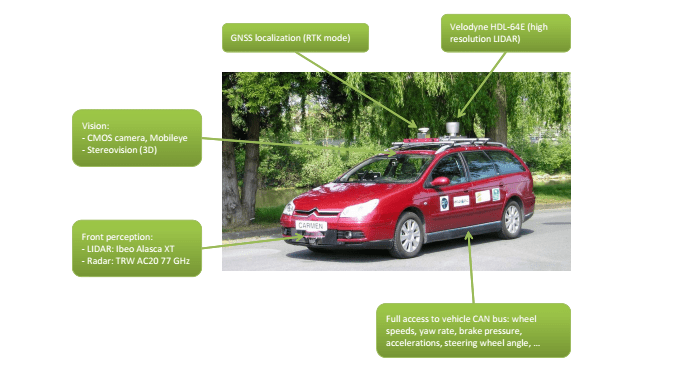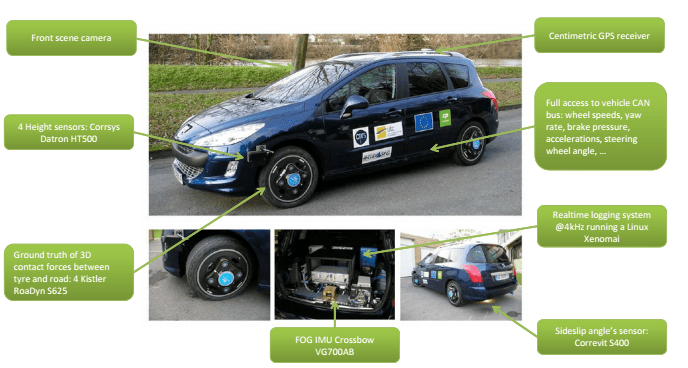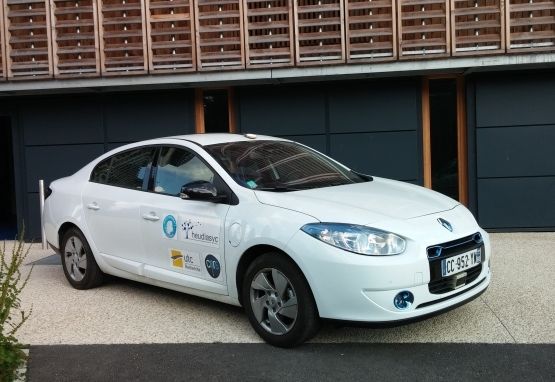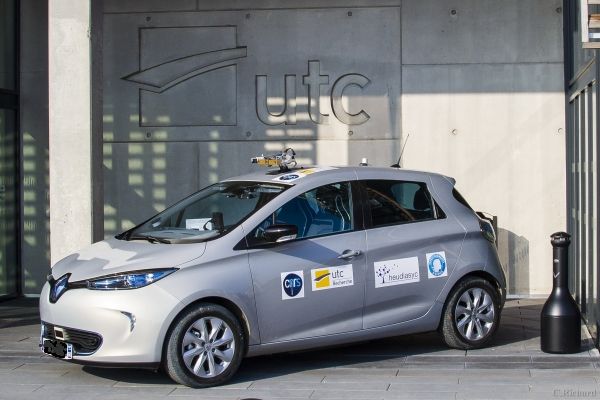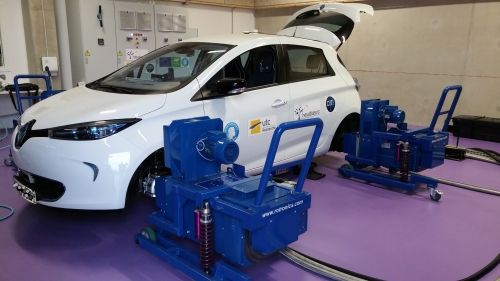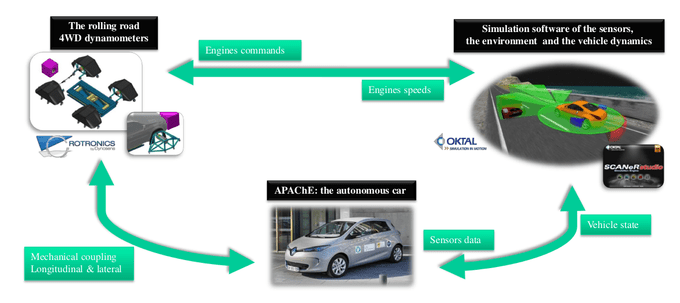Véhicules intelligents
PACPUS : Perception et Assistance pour une Conduite Plus Sûre.
Présentation de la plateforme
La plateforme PACPUS est une plateforme de recherche technologique hébergée au sein de l’UMR Heudiasyc 7253 UTC/CNRS.
Il vise à intégrer les outils et ressources pour mener des recherches et expérimentations dans le domaine des véhicules intelligents. L’un des principaux objectifs de la plate-forme est de développer, intégrer et tester les fonctions ADAS (Advanced Driver Assistance Systems) et plus particulièrement dans le contexte des véhicules autonomes.
La plate-forme est composée de 6 véhicules expérimentaux, de moyens d’essais et de logiciels.
La plateforme est financée par les tutelles d’Heudiasyc :
et par plusieurs pouvoirs publics :
- la région Hauts-de-France et le FEDER (Fonds Européen de Développement Régional) ;
- les Projets européens ;
- les Projets R&D de l’Agence Nationale de la Recherche.
La plateforme est également ouverte aux collaborations industrielles directes.
Historique de la plateforme
Ce projet a été initié par :
- les Projets de recherche européens du PCRD (Prometheus 1991–1994, Roadsense 2001–2004) ;
- les projets nationaux du PREDIT (ARCOS 2001–2004, MobiVip 2004–2007, Sari 2005–2008) ;
- le programme CNRS ROBEA (Bodega 2003–2005) ;
- le GdR CNRS/INRETS CHMAC (Coopération Homme-Machine pour l’Aide à la Conduite automobile 1999–2001).
En 2005, la plate-forme a été identifiée par le CNRS comme plate-forme stratégique et a été accompagnée par l’organisme pour acquérir le banc d’essai CARMEN. CARMEN a été présenté aux symposiums IEEE IV2008 et IV2011 en tant que démonstrateur.
Véhicules
Logiciel PACPUS
Le framework OpenSource PACPUS est accessible à cette adresse : https://devel.hds.utc.fr/software/pacpus
Application
Le projet européen VERVE, un premier résultat de conduite autonome avec un véhicule ROBOTEX.
La voiture APAChE a été utilisée pour effectuer des virages complets de la piste d’essai de SEVILLE au Centre d’innovation de l’UTC :
Plateforme avancée de mobilité urbaine UMAP par Renault
Les chercheurs d’Heudiasyc travaillent avec Renault pour construire une voiture sans conducteur. Le framework PACPUS est embarqué dans ce prototype pour alimenter les parties localisation et perception du système :




